Welcome to our comprehensive Biofloc Fish Farm Cost and Profit Analysis: Economics and Project Report guide. In this blog, we will delve into the fascinating world of biofloc fish farming, exploring the financial aspects that play a crucial role in the success of such ventures, from analyzing the costs involved in setting up a biofloc fish farm to estimating potential profits.Let’s check out the project report of biofloc fish farming below.
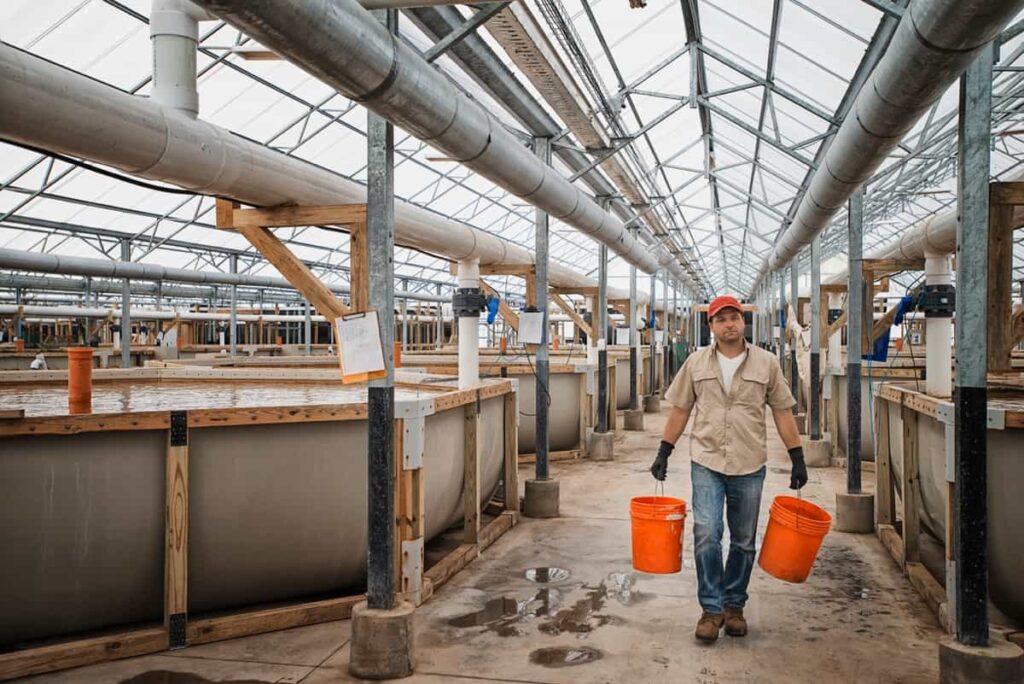
Introduction to Biofloc Fish Farming
The fish and shrimp farming sector is experiencing significant growth due to economic development and a focus on sustainability. With the rise of disease outbreaks in shrimp aquaculture and the increasing cost of commercial feed, adopting eco-friendly technologies like Biofloc and periphyton-based farming systems is gaining traction. Biofloc technology is revolutionizing intensive aquaculture by offering high productivity with a sustainable approach.
Biofloc consists of beneficial microorganisms such as bacteria, algae, fungi, and other organisms. By maintaining a high carbon-to-nitrogen ratio, the system promotes the growth of heterotrophic bacteria, which helps control water quality. When combined with periphyton, Biofloc enhances natural production and overall productivity.
Additionally, the reduced water exchange in the Biofloc system improves pathogen exclusion in the culture pond, supporting high density and biosecurity. This approach maximizes nitrogen utilization from feed input and creates an economically viable system. By prioritizing bacterial dominance and in situ bioremediation, Biofloc technology offers a healthier rearing system and a potential solution for disease prevention in shrimp farming operations.
Principles of Biofloc Technology
Biofloc technology manipulates the carbon-to-nitrogen ratio in fish and shrimp ponds, enabling the utilization of nitrogenous waste by microbial protein, known as biofloc. This principle combines removing nutrients from the water with generating microbial biomass, which serves as an additional food source for the cultured species.
By incorporating locally available carbon sources or reducing protein percentage in the feed, an optimal C: N ratio of 12-15:1 can be achieved. This ratio facilitates the immobilization of inorganic nitrogen into bacterial cells while metabolizing organic substrates. The concept of biofloc emerged in 1976 and was further developed by Prof. Yoram from Israel, gaining popularity worldwide.
In case you missed it: Fish Farm Operations Management: Month-wise Maintenance for Better Profits
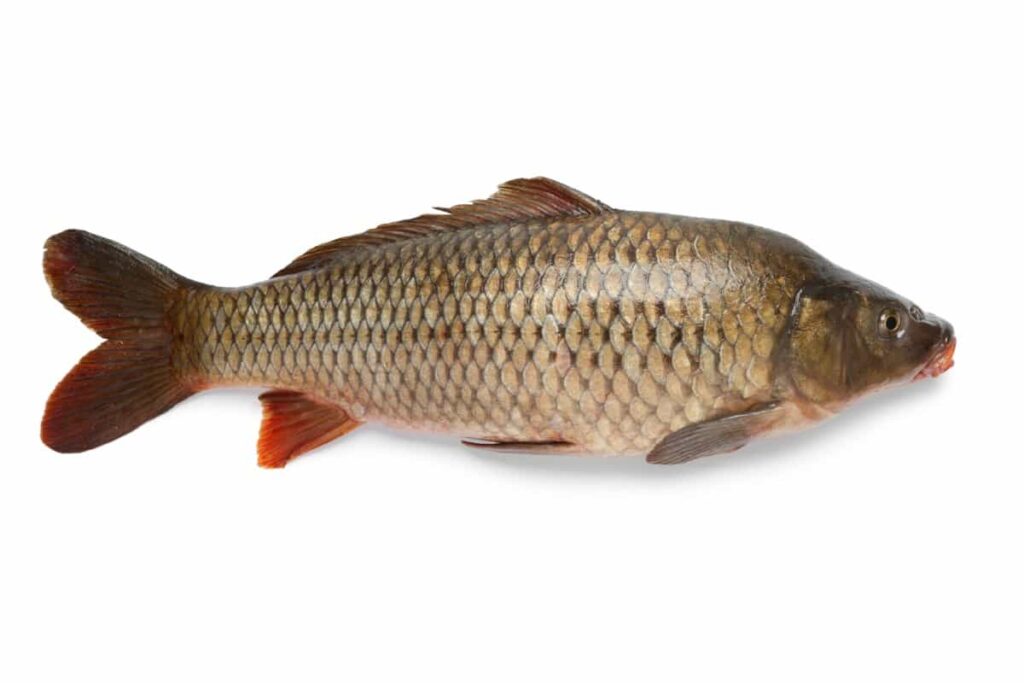
Different biofloc systems, such as green, black, and brown, exist based on microbial composition. Brown flocs offer enhanced stability, nutrition, and predictability. Continuous aeration is necessary to maintain the suspension of bacterial biomass. Biofloc systems exhibit higher total bacterial counts than conventional systems, potentially acting as a natural defense against Vibrio species and ectoparasites.
Advantages of Biofloc Fish Farming
- Biosecurity: Minimal water exchange in biofloc systems helps maintain biosecurity, while heterotrophic bacteria reduce toxic metabolites.
- Easier management and environmental friendliness: Reduced protein requirement, fish meal usage, and water/nutrient discharge contribute to a more manageable and environmentally friendly approach. Diurnal changes in pH, oxygen, and carbon dioxide are also minimized.
- Enhanced protein utilization and digestion: Shrimp in biofloc systems consume feed and harvest flocs, doubling protein utilization. Enzymes and growth promoters further enhance digestion.
- Probiotic action: Biofloc promotes a more diverse aerobic gut flora, reducing the presence of pathogenic bacteria like Vibrios.
- Immune response stimulation: Biofloc stimulates humoral and cellular immunity in cultured species.
- Cost savings: Biofloc fish farming offers lower production costs, with 15-20% savings, including significant savings in feed expenses (30-50%).
- Augmented natural food and improved feed conversion: Biofloc systems enhance natural food availability and improve feed conversion ratios.
- Reduced sensitivity to light fluctuations: Biofloc technology provides stability in light-related fluctuations.
- Simplified infrastructure: Growing shrimp in biofloc systems eliminates the need for multiple external filtration systems, reducing startup operational expenses.
How Biofloc Technology Works and Composition and Nutritional Value
- Biofloc system is an important approach in aquaculture that functions as a wastewater treatment method.
- The technique maintains a higher carbon-to-nitrogen ratio by adding a carbohydrate source, producing high-quality single-cell microbial protein.
- Heterotrophic microbial growth occurs in this environment, assimilating nitrogenous waste that can be utilized as feed by the cultured species. It also acts as a bioreactor, controlling water quality.
- Biofloc facilitates the rapid immobilization of toxic nitrogen species due to the faster growth rate and higher microbial production of heterotrophs compared to autotrophic nitrifying bacteria.
- The technology is based on the principle of flocculation within the system.
- Biofloc is a heterogeneous aggregate consisting of suspended particles and a variety of microorganisms, including bacteria, algae, fungi, invertebrates, and detritus.
- It is a protein-rich live feed that forms as new feed and manure are converted into natural food through exposure to sunlight and vigorous aeration.
- Each floc is held together by mucus secreted by bacteria and bound by filamentous microorganisms or electrostatic attraction. Flocs range in size from microscopic to visible.
- Biofloc has good nutritional value, with dry-weight protein ranging from 25% to 50% and fat ranging from 0.5% to 15%. It is also rich in vitamins and minerals, particularly phosphorus.
- Biofloc exhibits probiotic-like effects, and dried biofloc is suggested as a potential ingredient to replace fishmeal or soybean in feed formulations.
In case you missed it: A Guide to Sustainable RAS Fish Farming Practices
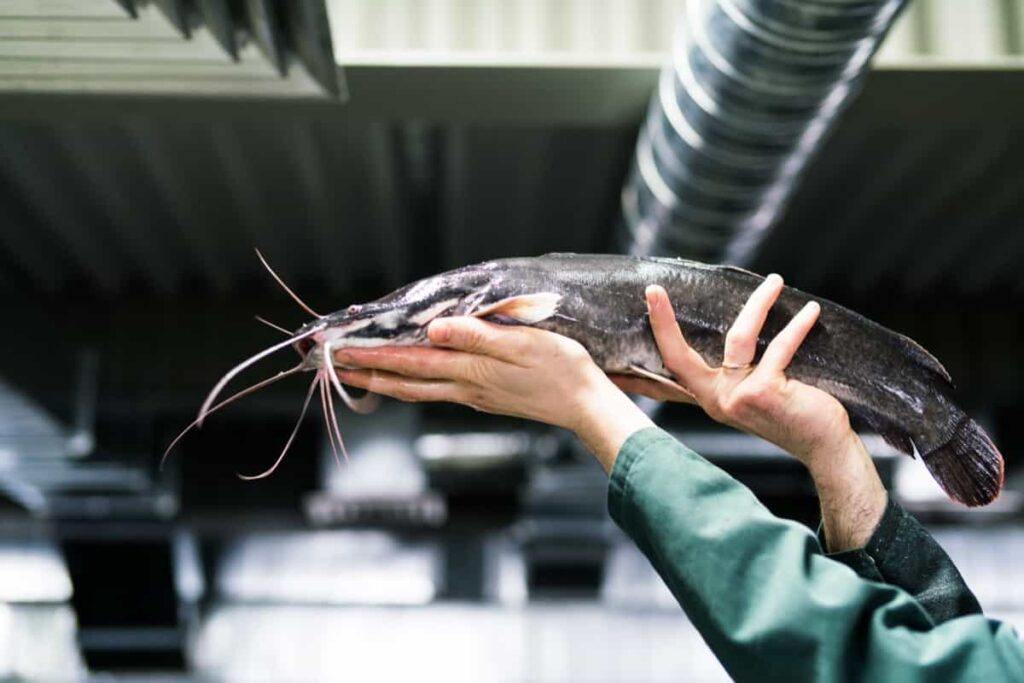
Species Suitable for Biofloc Culture Farms
Choosing the right species is crucial when implementing a biofloc culture system. It works best with species that can benefit from consuming the biofloc directly. Additionally, suitable species should be able to tolerate high solids concentration and poor water quality.
Air-Breathing Fish
- Singhi (Heteropneustes fossilis)
- Magur (Clarias batrachus)
- Pabda (Ompok pabda)
- Anabas/Koi (Anabas testudineus)
- Pangasius (Pangasianodon hypophthalmus)
Non-Air-Breathing Fishes
- Common Carp (Cyprinus carpio)
- Rohu (Labeo rohita)
- Tilapia (Oreochromis niloticus)
- Milkfish (Chanos chanos)
Shellfish
- Vannamei Shrimp (Litopenaeus vannamei)
- Tiger Shrimp (Penaeus monodon)
Biofloc Technology and Standard Operation Procedures
Biofloc technology is a promising approach for improving shrimp farming production through biosecurity, stocking density, and water quality management. Proper standard operation procedures (SOPs) are crucial for successful biofloc systems.
Suitable Species and Stocking Density: Biofloc-based culture systems are suitable for high-density culture of species like P.vannamei, while other penaeid shrimp species may need improvement. The nursery and grow-out cultures are segregated, with stocking densities ranging from 10-30 mt/ha for shrimp or 1-400 mt/ha for fish.
Feeding Strategies and Protein Regime: Feeding strategies in the biofloc system are based on observation of fish/shrimp feeding behavior. Feed rates should be adjusted based on daily consumption, and protein levels can be reduced to optimize the carbon-to-nitrogen (C:N) ratio and promote microbial floc regeneration.
Biofloc Generation and System Design: Biofloc generation methods depend on system design, species, farming intensity, and buffering time. The system can operate with complete biofloc or semi-bio floc mode, with or without substrates for periphyton growth. A pond liner maintains biofloc suspension, and autotrophic algae dominate the system.
Floc Management and Carbon Addition: Floc management focuses on bacterial needs since the total bacterial biomass exceeds that of the shrimp. Floc volumes and total soluble solids should be managed, and carbon addition can help regulate total ammonia nitrogen (TAN) levels. pH control can be achieved through lime, dolomite, or bicarbonate additions.
Environmental Requirements: Biofloc systems operate with zero water exchange, enhancing biosecurity. Bacteria consume ammonia, and higher levels of nitrite are tolerated. Alkalinity levels should be maintained, and aerators need to be positioned correctly.
In case you missed it: Sustainable Fish Farming: Zero Waste Fish Farming Practices
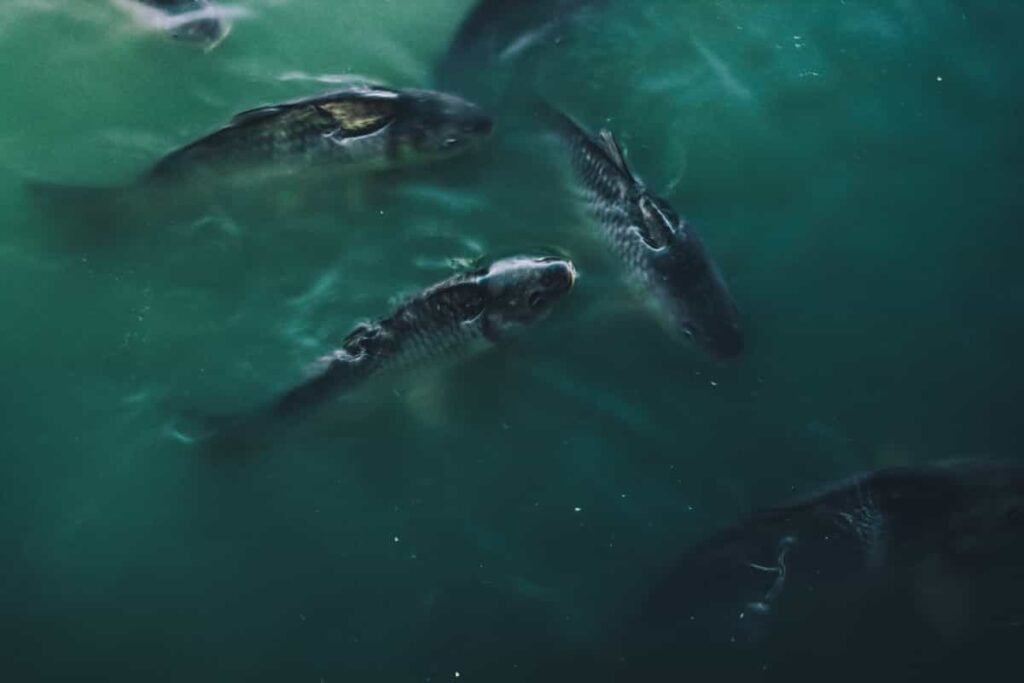
Water Quality Management: Daily monitoring of water quality parameters is essential, including dissolved oxygen, pH, temperature, turbidity, TAN, NH3, NO3, NO2, and total heterotrophic count. Maintaining proper water quality prevents the production of harmful metabolites.
Biosecurity Measures: Ensuring biosecurity involves checking seed quality, monitoring incoming water, disinfecting vehicles and equipment, and promoting hygiene practices among farm workers. Fencing is necessary to restrict the movement of bio flocs, with bird and crab fencing covering the entire pond.
Project Report of Biofloc Fish Farming
Cost Analysis of Biofloc Fish Farm
- Species Combination: The fish species combination consists of Catla (40%), Rohu (30%), and Mrigal (30%).
- Harvesting Weight: Fish are harvested when they reach an average weight of 800 grams to 1.25 kilograms by the end of the first year.
- Organic Manuring: Organic manuring is done in monthly installments.
- Inorganic Fertilization: Inorganic fertilization is done monthly, alternating with organic manuring.
- Feeding Rate: The recommended feeding rate is 5-6% of the body weight of fish up to 500 grams in size. It is then reduced to 3.5% for fish weighing between 500 and 1000 grams.
- Fish Feed Mixture: Fish can be fed a mixture of rice bran and oilcake in a ratio of 4:1.
- Stocking: Fish fingerlings of approximately 50-100 grams in size are stocked at a rate of 5000 per hectare.
- Rearing Duration: The model assumes stocking advanced fingerlings and rearing for 10-12 months.
Capital Costs
| Particulars | Unit | Unit Rate | Quantity | Amount |
| Land | Own | – | – | – |
| Site Development | Ls. | 10,000-12,000 | 2 | 20,000-24,000 |
| Construction of Pond | Rs./ha. | 70,000-80,000 | 2 | 1,40,000-1,60,000 |
| Store Room | Sq.ft. | 100 | 150 | 15,000 |
| Diesel Pump Set | Ls. | 30,000 | 1 | 30,000 |
| Inlet/Outlet Sluices | Ls. | 10,000-15,000 | 1 | 10,000-15,000 |
| Nets and Other Implements | Ls. | 10,000 | 1 | 10,000 |
| Contingencies | % | 5 | – | 10,750 |
| Total (A) | 2,25,750 – 2,45,750 |
Working Capital (One Production Cycle):
| Particulars | Unit | Unit Rate | Quantity | Amount |
| Fish Seed | Fingerlings | 14,000 | 5 | 70,000 |
| Fish Feed | Kg | 12 | 12,000 | 1,44,000 |
| Lime | Kg | 5 | 1,000 | 5,000 |
| Single Super Phosphate | Kg | 5 | 500 | 2,500 |
| Urea | Kg | 5 | 1,000 | 5,000 |
| Raw Cow Dung | Tons | 500 | 20 | 10,000 |
| Harvesting Charges | Kg | 5 | 8,000 | 40,000 |
| Drying, Desilting, and Ploughing | Ls. | 6,000 | 1 | 6,000 |
| Security of Pond | Ls. | 10,000 | 1 | 10,000 |
| Total (B) | 2,92,500 |
Total Cost of Project (A+B): Rs. 5,18,250 – 5,38,250
Note: Please note that the values in the table are estimates based on the provided data, and the actual costs may vary.
In case you missed it: Fish Hatchery Business Plan: How to Start, Cost, Profits, and a Great Way to Make Money
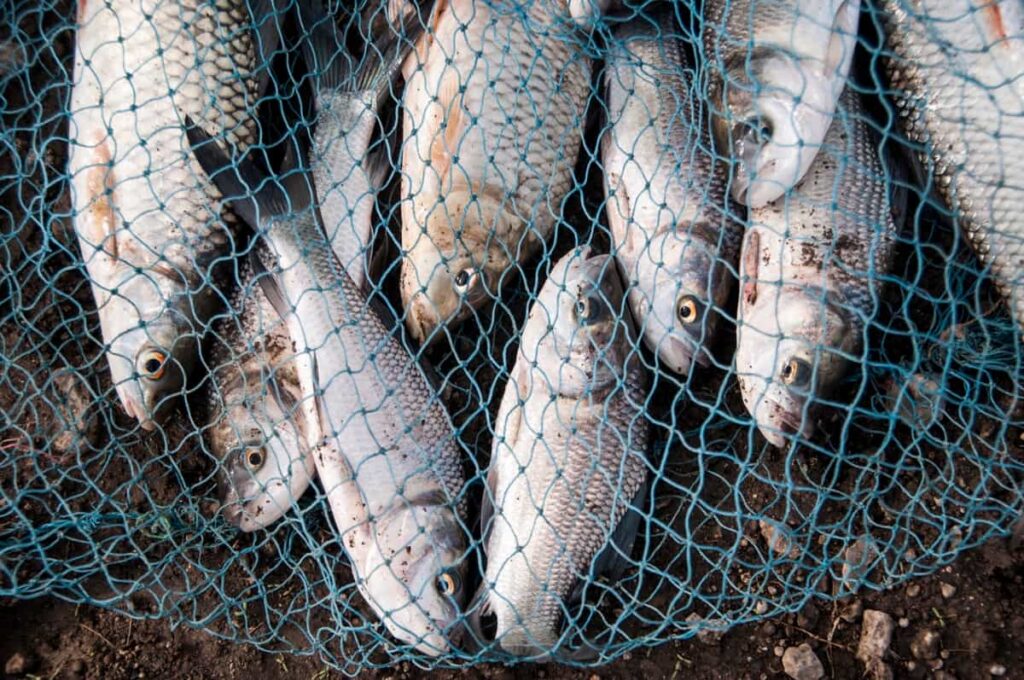
Profit Analysis of Biofloc Fish Farm
The profit analysis of the biofloc fish farm over five years reveals a promising outlook. The farm generates income by selling fish, producing 10000 kg annually with a price rate of 250. On the expenditure side, costs include fish seed, feed, lime, single super phosphate, urea, raw cow dung, harvesting charges, drying, desilting, plowing, and pond security.
The net income is determined by subtracting the total expenditure from the income. The net income shows steady growth, with the highest amount recorded at Rs. 4,64,070 in the fifth year. This analysis indicates the potential profitability of the biofloc fish farm, making it an attractive venture for fish farmers.
Economic Viability and Project Report
The financial analysis of the biofloc fish farm project reveals its economic viability. The capital costs for setting up the farm amount to Rs. 2,25,750. Recurring costs remain consistent at Rs. 2,22,500 each year. The total cost incurred over the five years is Rs. 10,62,250. The benefits generated from the farm reach Rs. 5,00,000 annually, resulting in a total benefit of Rs. 24,12,177.
After considering the depreciation of the building, fencing, borewell, machinery, and equipment, the net benefit amounts to Rs. 3,89,677. The net present value (NPV) at a discounting factor of 15% is calculated to be Rs. 9,44,003. The NPV of benefits is Rs. 16,49,088. The NPW at a discounting factor of 15% is Rs. 7,05,085. The benefit-cost ratio (BCR) at a discounting factor of 15% is 1.75:1. The internal rate of return (IRR) stands at an impressive 75.00%.
Success Stories of Biofloc Fish Farm Cost and Profit
Ramitha Dinu and Dinu Thankan, a couple from Ernakulam, India, turned to fish farming using biofloc technology to overcome financial challenges during the pandemic. Their journey has been highly successful, with the couple earning a profit of Rs 1 lakh from their first harvest.
Setting up the Farm: Under the guidance of an expert, the couple built a tank in their backyard and stocked it with 1,500 Tilapia fish babies. The investment for setting up the tank and purchasing necessary equipment amounted to approximately Rs 1.6 lakh. They received subsidies and obtained a farming license to support their venture.
Growth and Harvest: Within six months, the Tilapia fish grew to an average size of 350-400 grams, reaching maturity for harvest. The couple sold over 600 kilograms of fish from their first yield, earning a price of Rs 300 per kilogram. They marketed their fish through a neighborhood WhatsApp group and even provided doorstep delivery for convenience.
Care and Expertise: Maintaining the health and quality of the fish requires careful monitoring of pH and ammonia levels in the tank. The couple ensured a 24/7 electricity supply for artificial oxygenation, an essential aspect of biofloc technology. Dinu, with his expertise gained from classes and guidance from experienced individuals in the fisheries department, took charge of feeding the fish twice a day with organic and protein-rich food.
In case you missed it: Contract Fish Farming in India: Companies, Agreement, Profits, Process, Benefits, and Risks
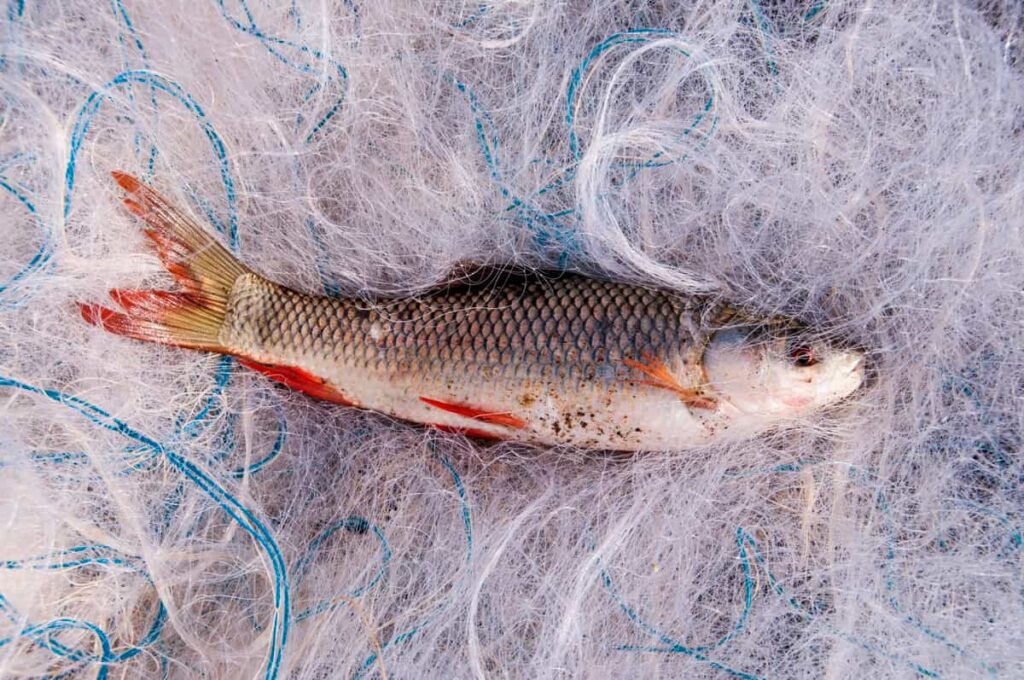
Expanding the Farm: Buoyed by their initial success, Ramitha, and Dinu are now preparing for their second harvest. They plan to expand their farming practice by setting up an additional tank, indicating their commitment and confidence in the potential of biofloc fish farming.
Yield: The couple earned a profit of Rs 1 lakh from selling over 600 kilograms of fish in their first harvest.
Conclusion
The cost and profit analysis of a biofloc fish farm demonstrates its economic viability. The project report reveals that by implementing biofloc technology, the potential for higher yields and reduced production costs can lead to significant profits, making it a promising investment opportunity.
- Profitable Village Farming Business Ideas in 2024
- High-Yield Aquaculture: Fast-Growing Fish for Farming
- Effective Fish Pond Construction Techniques for Beginners
- Irrigation and Water Management in Pineapple Farming
- Blossom to Harvest: Mastering Flowering and Pollination in Papaya Farming
- Pig Fattening Essentials: From Selection to Sale for Beginners
- Raising Wagyu Cattle: A Complete Guide for Premium Beef Production
- Soil Types and Their Water Holding Capacity
- Optimizing Irrigation Schedules for Coconut Groves for Enhanced Yield
- Espresso Your Garden: Coffee Grounds for Healthier Acid-Loving Plants
- The Best Soil Mix for Snake Plants: How to Mix Your Own Snake Plant Soil
- Green Thumb Success: Expert Tips for Cultivating Greenhouse Beans All Year Round
- Bloom All Year Round: The Ultimate Guide to Indoor Hyacinth Care
- Eco-Friendly Gardening: How to Make Liquid Fertilizer from Kitchen Waste
- Ultimate Guide to Grow Anise in Pots: Explore Seed Propagation to Harvesting
- Guide to Raising Chester White Pigs: Discover Breed Facts to Growth Management
- Mastering the Elegance: The Ultimate Guide to Weeping Cherry Tree Care, Planting, and Maintenance
- Ultimate Guide to Planting Garlic in Grow Bags: Growing Strategies for Beginners
- How to Fix Spider Plant Leaf-Related Problems: Natural and Organic Remedies
- 10 Reasons Why Your Tulsi Plant is Shedding Leaves: Home Remedies and Solutions
- Optimizing Growth and Yield: The Advantages of Palm Bunch Ash Fertilizer
- Utilizing Neem Oil Extract as a Natural Pesticide for Hydrangea
- From Soil to Harvest: Various Ways in Which Farmers Can Use AI Tools
- Steps to Encourage and Induce Citrus Flowers: A Comprehensive Guide
- How to Fix Snake Plant Leaf-Related Issues: Natural and Organic Remedies
- Transform Your Garden into a Fragrant Oasis with Raat Ki Rani (Night Blooming Jasmine)
- Discover the Ideal Chicken Breeds for Philippine Farms
- How to Create a Poultry Egg Farm Business Plan for Profits
- Grow Lemon Cucumbers Like a Pro: Insider Techniques for Bountiful Yields
- Ultimate Guide to Caring for Your Pink Princess Philodendron: Tips for Thriving Variegation
- Areca Nut Profit Per Acre: Calculating Yield and Cost of Cultivation
- How Kaveri Chicken is Becoming a More Profitable Breed in Indian Backyards
- Transform Your Barn: 9 Steps to Convert a Horse Stall into a Chicken Coop
- Exploring Suffolk Sheep Disadvantages with Limitations and Challenges
- Guide to Solving Potted Lemon Tree Problems: How to Revive Lemon Tree in Containers
- Steps to Encourage Female Pumpkin Flowers: Best Strategies for More Flowers and High Yields
